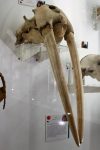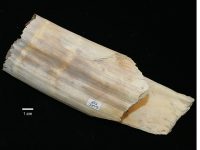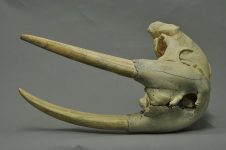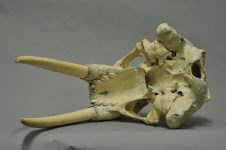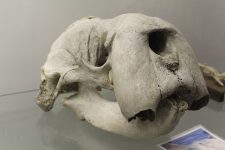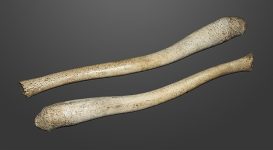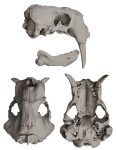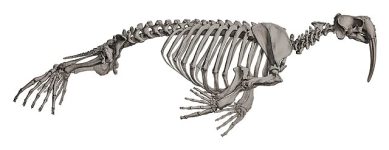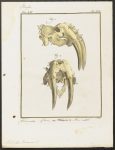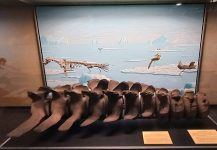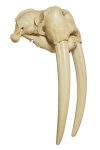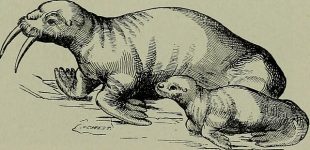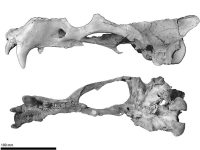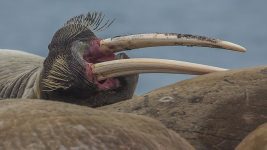walrus
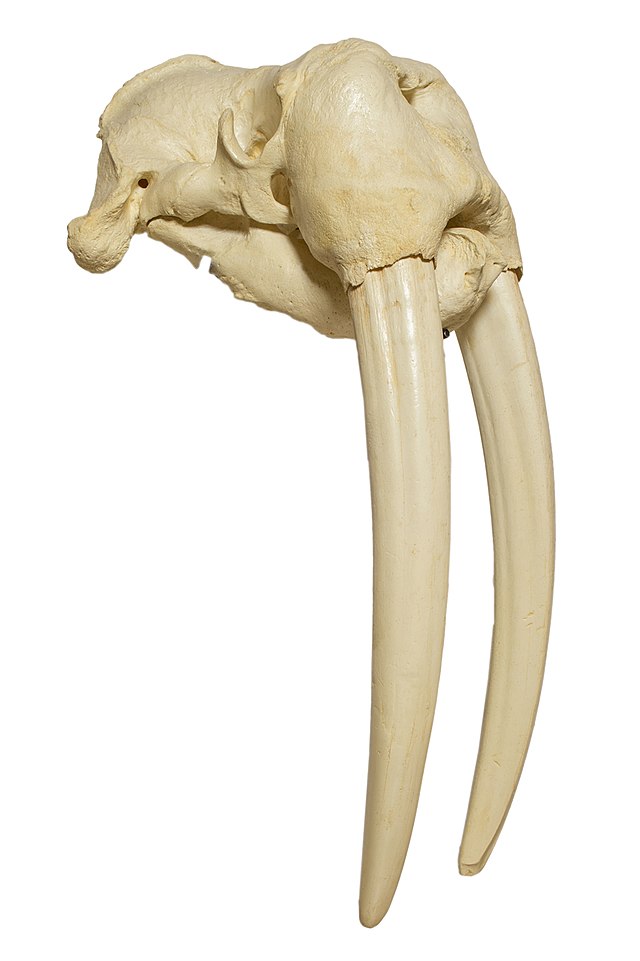
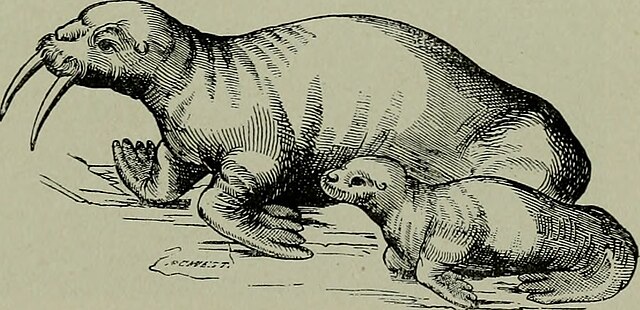
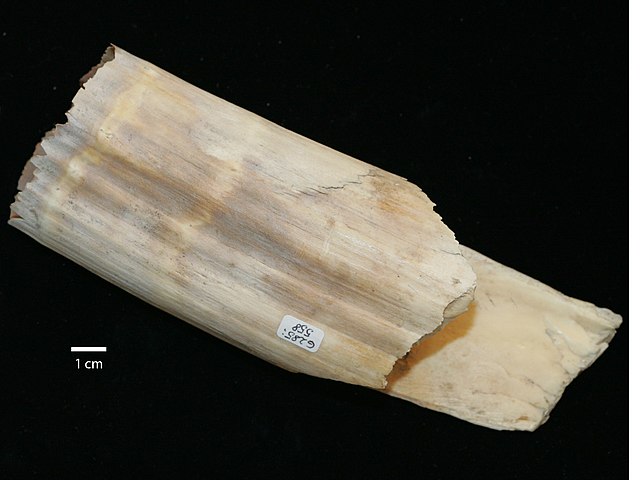
Walrus
Fossil walrus remains provide intriguing insights into the evolutionary history and ecological dynamics of these fascinating marine mammals. This essay explores various aspects of fossil walruses, including their evolutionary origins, paleobiogeography, paleoecology, and the significance of their fossils in understanding past climates and ecosystems.
Evolutionary Origins and Taxonomy
The walrus, scientifically known as Odobenus rosmarus, belongs to the order Carnivora and the family Odobenidae. Modern walruses are classified into two subspecies: the Atlantic walrus (Odobenus rosmarus rosmarus) and the Pacific walrus (Odobenus rosmarus divergens). Fossil evidence suggests that walruses have a rich evolutionary history dating back several million years.
Fossil walruses are primarily known from the Pleistocene epoch (2.6 million to 11,700 years ago) and are represented by several genera and species. Some of the notable genera include Protodobenus and Dusignathus, which are considered ancestral to modern walruses. These fossil taxa exhibit a range of morphological adaptations that reflect their evolutionary journey, including dental modifications and changes in body size.
Paleobiogeography
The distribution of fossil walruses provides valuable information about past geographical conditions and connectivity between regions. During the Pleistocene, walruses inhabited a wider range of habitats than their modern counterparts. Fossils have been discovered in various locations around the world, including North America (Alaska, California), Eurasia (Russia, Scandinavia), and even as far south as Japan.
The presence of fossil walruses in these diverse locations indicates past connections between regions via land bridges and the distribution of suitable marine environments. Studying the paleobiogeography of walruses contributes to our understanding of past oceanographic conditions and the effects of climate change on marine mammal populations.
Paleoecology and Adaptations
Understanding the paleoecology of fossil walruses involves examining their anatomical features, diet, and habitat preferences based on fossil evidence. Walruses are adapted to a semi-aquatic lifestyle, with specialized adaptations for both swimming and foraging in shallow waters. Fossil remains, such as tusks and teeth, provide insights into their feeding behaviors and ecological roles in ancient marine ecosystems.
The teeth of fossil walruses vary in size and shape depending on their diet. For instance, some species had robust teeth adapted for crushing hard-shelled invertebrates like clams and mussels, indicating a diet similar to that of modern walruses. Others may have had different dental adaptations suited to a broader range of prey items, reflecting variations in their ecological niches and dietary preferences.
In addition to dental adaptations, fossil walrus skeletons reveal changes in body size over time. Some ancient walrus species were larger than their modern counterparts, suggesting different ecological pressures and evolutionary trajectories. These size variations can provide clues about past environmental conditions, predator-prey dynamics, and the availability of food resources in ancient marine ecosystems.
Significance of Fossil Walruses in Paleoclimate Studies
Fossil walrus remains are valuable for reconstructing past climates and environmental changes. Isotopic analysis of fossil bones and teeth can provide information about ancient sea temperatures, ice coverage, and oceanographic conditions during different geological epochs. By studying the distribution of fossil walruses and comparing their isotopic signatures with modern specimens, researchers can infer how climate change has influenced walrus populations over time.
For example, fluctuations in walrus distribution and diversity during the Pleistocene are linked to changes in sea levels and the extent of polar ice sheets. Fossil evidence suggests that walruses may have migrated across different regions in response to these environmental changes, highlighting their ability to adapt to varying conditions over evolutionary timescales.
Conservation and Future Research
Studying fossil walruses is not only important for understanding their evolutionary history but also for informing modern conservation efforts. Modern walrus populations face numerous threats, including habitat loss, climate change, and human activities such as hunting and pollution. By examining the past responses of walruses to environmental changes, conservationists can develop strategies to protect and manage existing populations more effectively.
Future research on fossil walruses could focus on refining their evolutionary relationships, exploring additional fossil sites, and utilizing advanced analytical techniques to extract more information from existing specimens. Collaborative efforts between paleontologists, biologists, and climatologists are crucial for integrating fossil data into broader studies of marine mammal evolution and paleoenvironmental reconstruction.
